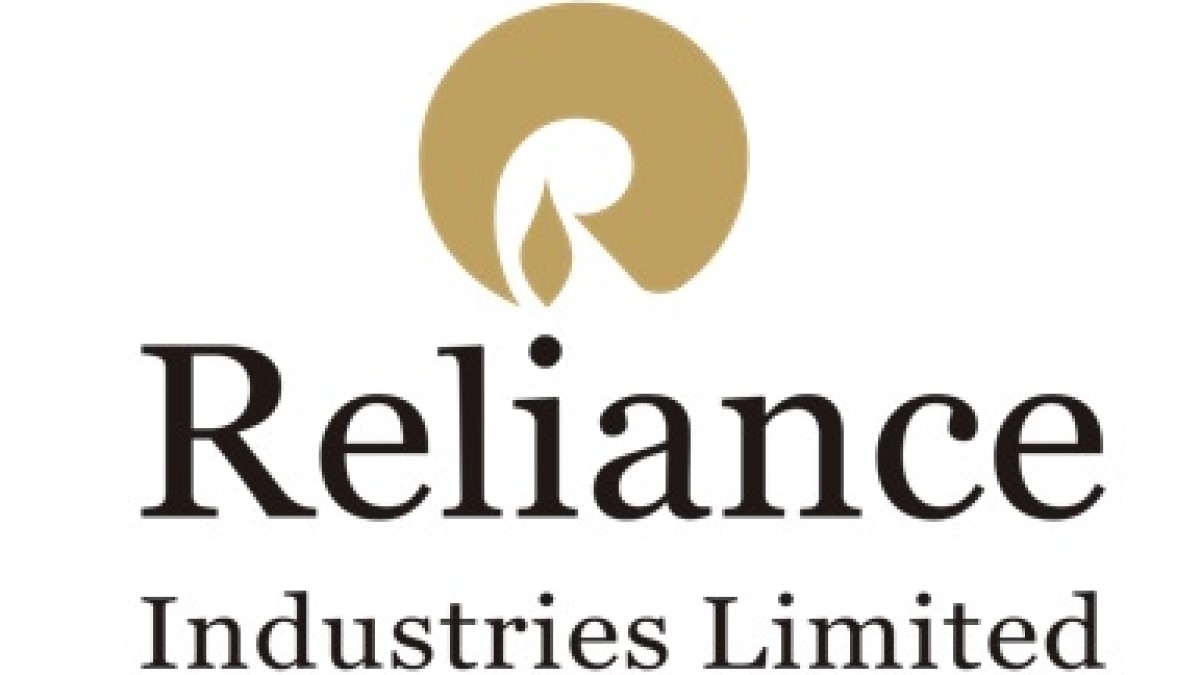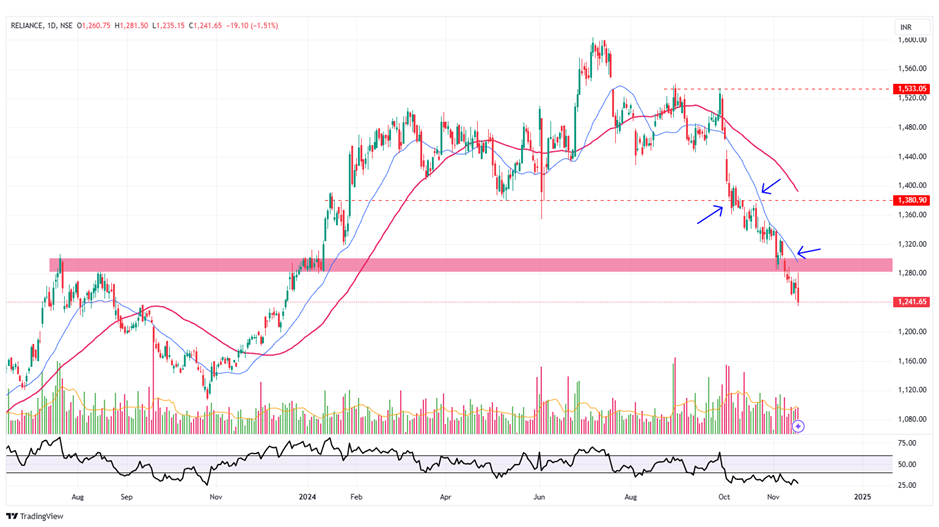Reliance Industries Ltd. Stock Analysis by Yagnesh Patel

Reliance Industries Ltd. Stock Analysis, support/ resistance levels, Bounce back
Reliance Inds. Analysis
- Price Correction: The stock began its decline from ₹1,530, a previous swing resistance, as marked on the daily chart. It made a low of ₹1,235 in November 2024, registering a 20% correction from the ₹1,530 level. From its all-time high, the stock has corrected 23%, factoring in post-corporate action adjustments.
- Support Levels Broken: The initial support level at ₹1,380 was breached, as highlighted by the red dotted line on the daily chart. Subsequently, the critical ₹1,300 support zone was also broken, as marked in the red zone on the chart. This indicates persistent weakness in the stock.
- Volume Analysis: While the stock has been falling over the past few sessions, the volume has not shown a significant increase, signaling a lack of strong bearish conviction. This divergence in price and volume suggests that a bounce-back from lower levels is possible.
- Moving Averages: The 20-day and 55-day moving averages are sloping downward, reaffirming the ongoing downtrend. However, the current price is significantly far from these MAs, which increases the probability of a mean reversion or short-term pullback.
- RSI : On both weekly and daily timeframes, the RSI is in the deep oversold zone below 30, indicating that the stock is oversold. Historically, such levels have been associated with short-term bounces or consolidation.

Conclusion: It is a high possibility stock may give pullback & go higher from cmp – 1241
Important Resistance: 1268 – 1287 – 1310
Important Support: 1228 – 1188 – 1150
Analyst: Yagnesh Patel
Telegram Channel: Click Here
SEBI Registered Research Analyst
Registration Number: INH000016320
Email: support@yagneshpatel.in
Disclaimer-
I’m SEBI Registered RA. Investment in securities market are subject to market risks. Read all the related documents carefully before investing. Registration granted by SEBI, membership of a SEBI recognized supervisory body (if any) and certification from NISM in no way guarantee performance of the intermediary or provide any assurance of returns to investors.
Analyst Certification: The Analyst certify (ies) that the views expressed herein accurately reflect his (their) personal view(s) about the subject security (ies) and issuer(s) and that no part of his (their) compensation was, is or will be directly or indirectly related to the specific recommendation(s) or views contained in this research report.
SEBI registered RA number INH000016320.
Categories: : Stocks For Watchlist
 Yagnesh Patel
Yagnesh Patel 